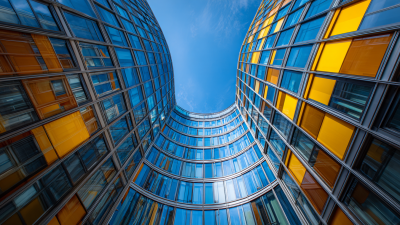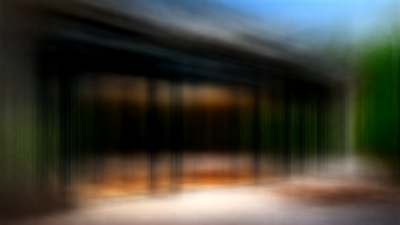The advancements in Aluminum Window Designs have sparked significant interest in both energy efficiency and aesthetic appeal, making them a vital consideration for modern architectural projects. As a leading player in this field, LEAWOD Windows & Doors Group Co., Ltd. specializes in the research, development, and manufacturing of high-end windows and doors, including innovative R7 seamless whole welding designs. These cutting-edge aluminum window solutions not only enhance the visual charm of buildings but also contribute to improved energy performance. By effectively insulating against temperature variations, they promote sustainability and reduce energy consumption, aligning with contemporary demands for environmentally friendly construction.

This introduction explores the intricate balance between the functionality and beauty of aluminum window designs, highlighting their impact on energy efficiency and the role of industry leaders like LEAWOD in advancing these technologies.
Aluminum frame materials play a crucial role in enhancing the energy efficiency of buildings. The application of powder-coated aluminum profiles not only improves durability but also insulates buildings from external temperature variations. This insulation capability helps reduce energy consumption for heating and cooling, contributing to a decrease in overall energy loads associated with building operations. As energy efficiency becomes a cornerstone of sustainable building practices, the selection of appropriate framing materials is essential for optimizing performance.
Moreover, the aesthetic appeal of aluminum windows cannot be overlooked. These designs are available in a variety of finishes and styles, providing architects and builders the flexibility to create visually appealing structures without compromising energy efficiency. The integration of energy-saving design methods, coupled with advanced aluminum framing systems, allows for the development of buildings that meet modern architectural standards while addressing environmental concerns. By balancing aesthetics with functionality, aluminum window designs are redefining the role of windows in contemporary architecture.
This chart illustrates the relationship between different aluminum frame designs and their respective energy efficiency ratings based on U-values. The data indicates how various design features enhance both energy efficiency and aesthetic appeal.
 Innovative window designs play a crucial role in striking a balance between
aesthetics and
functionality, particularly in the context of
aluminum windows. The sleek, modern
look of aluminum frames can enhance the overall aesthetic of a building, providing a contemporary touch that appeals to architects and homeowners alike. This appeal is not just superficial; well-designed aluminum windows often feature
slim profiles and larger glass areas, which allow for more
natural light and create an inviting atmosphere indoors.
Innovative window designs play a crucial role in striking a balance between
aesthetics and
functionality, particularly in the context of
aluminum windows. The sleek, modern
look of aluminum frames can enhance the overall aesthetic of a building, providing a contemporary touch that appeals to architects and homeowners alike. This appeal is not just superficial; well-designed aluminum windows often feature
slim profiles and larger glass areas, which allow for more
natural light and create an inviting atmosphere indoors.
Beyond visual appeal, the functionality of these innovative window designs cannot be overlooked. Advanced thermal breaks and energy-efficient glazing technologies significantly enhance energy performance, helping to keep interiors comfortable while reducing heating and cooling costs. These windows can also be tailored to fit a variety of architectural styles, offering versatility without compromising on energy efficiency. The result is a harmonious integration of form and function, where aesthetic enhancements do not detract from the window's performance, but rather complement it, making aluminum windows a wise investment for both beauty and energy savings.
Insulation technologies play a crucial role in enhancing the performance of aluminum windows, significantly impacting their energy efficiency. Modern advancements in thermal insulation, such as the use of polyamide thermal breaks and advanced glazing options, have transformed aluminum windows from energy inefficiencies to effective barriers against heat transfer. These innovations allow aluminum frames to maintain their strength and durability while improving their insulating properties, thus reducing the overall energy consumption of buildings.

Moreover, the aesthetic appeal of aluminum windows is enhanced by these insulation technologies. Homeowners and architects can now select designs that not only maximize energy efficiency but also complement the visual aspects of a building. The integration of energy-efficient insulating features does not compromise the sleek and modern look that aluminum frames are known for. Instead, it creates a harmonious balance where functionality meets style, making aluminum windows a preferred choice for those looking to improve both the energy performance and aesthetic value of their spaces.
Aluminum windows have become a cornerstone of modern architecture, combining energy efficiency with striking aesthetic appeal. As contemporary design trends evolve, architects increasingly favor aluminum for its sleek profiles and versatility. The minimalist look offered by aluminum frames complements various architectural styles, from urban high-rises to stylish residential homes. This allows designers to create spaces that are not only visually appealing but also highly functional, enhancing natural light and offering unobstructed views.
At LEAWOD Windows & Doors Group Co., Ltd., we recognize the importance of innovation in this rapidly changing market. As a leader in high-end windows and doors, we continually prioritize research and development to ensure our products meet the diverse needs of modern architecture. Our R7 seamless whole welding technology exemplifies this commitment, providing not only superior energy performance but also a clean, aesthetic line that modern designs demand. By partnering with skilled dealers, we strive to bring cutting-edge aluminum window solutions that reflect both quality craftsmanship and contemporary trends in design aesthetics.
Aluminum windows have become a popular choice for modern architecture, not only for their sleek aesthetic appeal but also for their sustainability features. One of the key sustainability considerations is the recyclability of aluminum. This material is highly recyclable and retains its properties even after multiple cycles of recycling. In fact, nearly 75% of all aluminum ever produced is still in use today, demonstrating its longevity and the efficiency of recycling processes. This reduces waste and energy consumption significantly compared to other materials, making aluminum windows an environmentally friendly option.
Furthermore, the lifespan of aluminum windows contributes to their sustainable appeal. Typically, aluminum windows can last up to 40 years or more, depending on maintenance and environmental conditions. This durability not only lessens the frequency of replacements but also minimizes the environmental impact associated with manufacturing new windows. Thus, when architects and homeowners opt for aluminum window designs, they are not only enhancing the aesthetic value of their spaces but also making a conscious choice toward sustainability, promoting a greener future.
| Design Type | Energy Efficiency Rating | Aesthetic Appeal (1-10) | Recyclability Rate (%) | Average Lifespan (Years) |
|---|---|---|---|---|
| Classic Double-Hung | 0.32 | 8 | 90 | 40 |
| Sliding Windows | 0.28 | 7 | 90 | 45 |
| Casement Windows | 0.25 | 9 | 90 | 50 |
| Picture Windows | 0.30 | 10 | 90 | 60 |
| Awning Windows | 0.27 | 8 | 90 | 45 |
: Aluminum frame materials improve energy efficiency by providing insulation against external temperature variations, which reduces energy consumption for heating and cooling.
Powder-coated aluminum profiles enhance durability and insulation, contributing to decreased overall energy loads in building operations.
Aluminum windows come in various finishes and styles, allowing architects and builders to create visually appealing structures while maintaining energy efficiency.
Modern insulation technologies, like polyamide thermal breaks and advanced glazing options, enhance aluminum windows' ability to act as effective barriers against heat transfer, improving their energy efficiency.
No, insulation technologies enhance the aesthetic appeal of aluminum windows without compromising their sleek, modern look, allowing for a balance between functionality and style.
Energy efficiency is crucial because it reduces energy consumption, thus supporting sustainable building practices while addressing environmental concerns.
By improving the insulating properties of aluminum frames, insulation technologies reduce the overall energy consumption associated with heating and cooling.
Yes, aluminum windows can combine energy efficiency with aesthetic appeal, offering modern designs that enhance both visual and functional aspects of buildings.
The selection of framing materials should consider their impact on energy efficiency, aesthetic value, and overall performance in sustainable building practices.
Modern architectural standards are met through the integration of energy-saving design methods and advanced aluminum framing systems that balance aesthetics with performance.
Aluminum Window Designs play a significant role in enhancing both energy efficiency and aesthetic appeal in modern architecture. The utilization of aluminum frame materials improves thermal performance, reducing energy consumption while maintaining structural integrity. Innovative designs balance aesthetics with functionality, making aluminum windows a favored choice among architects and homeowners. The integration of advanced insulation technologies further boosts the performance of these windows, ensuring optimal energy retention.
Moreover, trends in design aesthetics showcase aluminum windows as a key element in contemporary buildings, contributing to a sleek, modern look. Sustainability is also a crucial consideration, as aluminum windows are not only durable but also recyclable, extending their lifespan and minimizing environmental impact. As a leader in the industry, LEAWOD Windows & Doors Group Co., Ltd. exemplifies these principles through its high-end, seamless whole welding window solutions, catering to the demand for both beauty and efficiency in aluminum window designs.











 +0086-157 7552 3339
+0086-157 7552 3339  info@leawod.com
info@leawod.com 